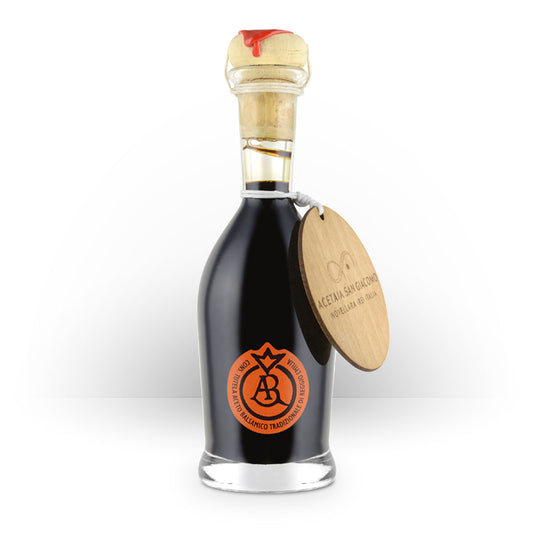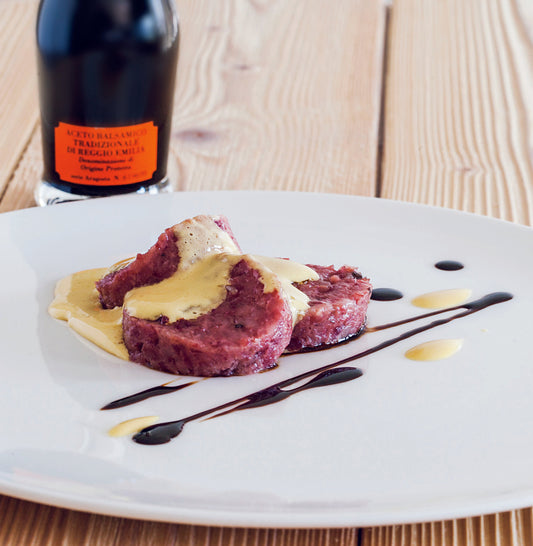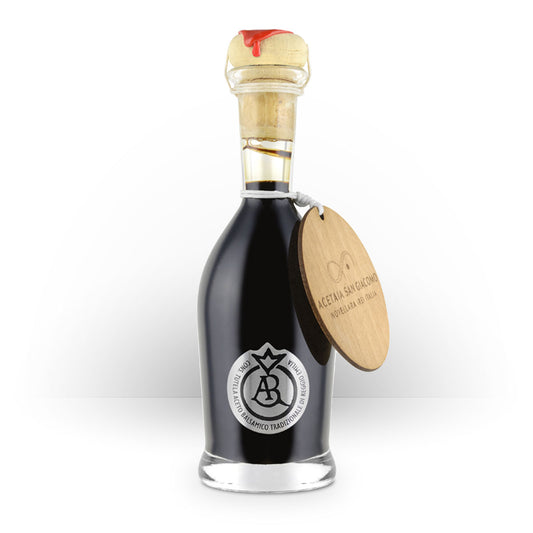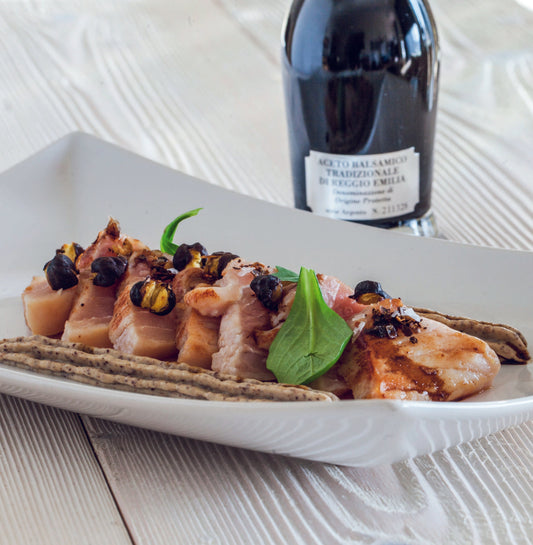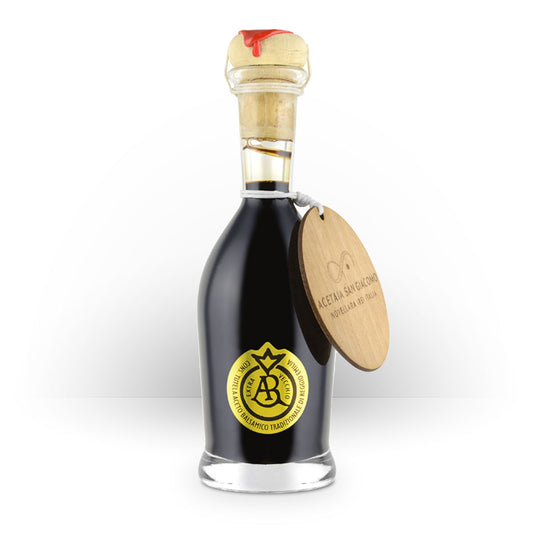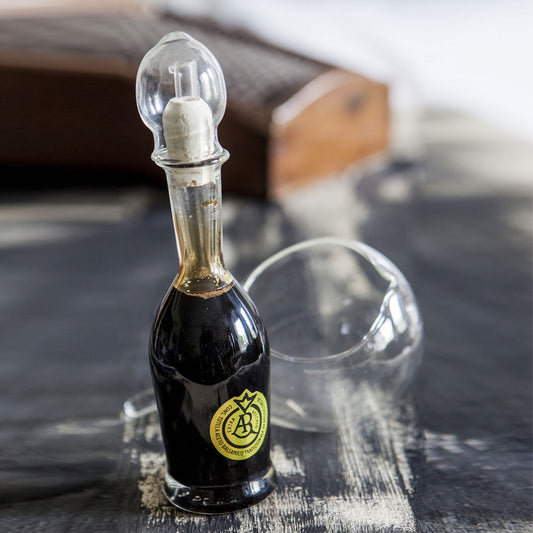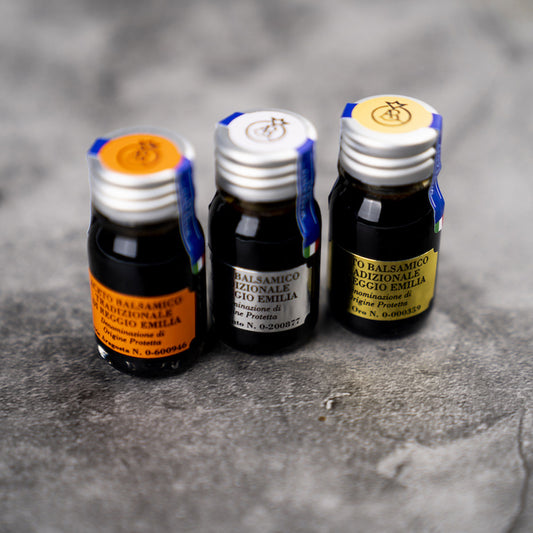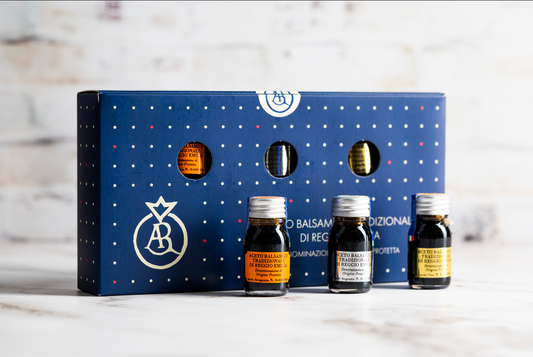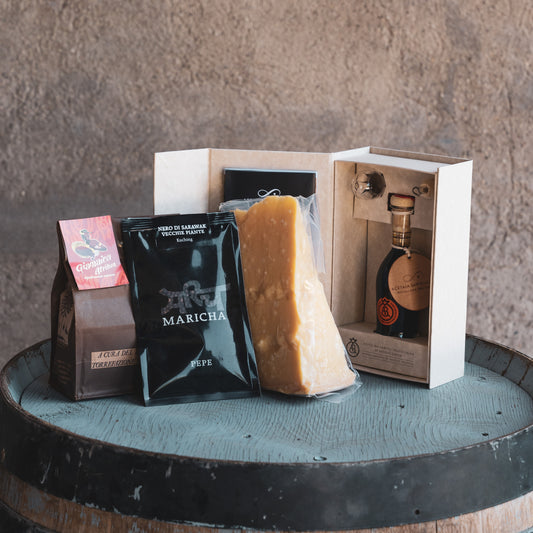Traditional Balsamic Vinegar of Reggio Emilia DOP
PREAMBLE
The "Balsamic phenomenon" is not something fixed and crystallized in history.
Also because crystallizing a Tradition is always a utilitarian and biased, discretionary act.
The Balsamic Tradition is an ambiguous flow of natural phenomena (fermentations and bio-oxidations), more or less local cultures (think of the cooking of the must, common at least to the entire Mediterranean basin) and social needs (the need, i.e. , to have exclusive ... luxury products, with a high symbolic value).
There are "eras", historical moments, which contribute to understanding and understanding the complex "Balsamic phenomenon".
If you love details and want to delve deeper into the historical genesis of this phenomenon, come and visit us or take part in one of our seminars and educational courses.
Now, the question is very simple. The term "Balsamic" is a generic (common) term which, today, has lost its geographical connotation.
So anyone can make a product and call it "Balsamic". Historically, however, this has not always been the case.
The fact that vinegars, condiments, sweet and sour desserts, sauces, glazes, spherifications etc.. can be called with the term "Balsamic" is something that has been happening for about 60 years, that is, since it was defined by law (Ministerial Decree) that you could make a product called "Balsamic Vinegar of Modena". What then became PGI in 2009. What we have always decided not to produce.
It was 1965 and until then, the term "Balsamic" tout court was not attributed to any commercial product. It essentially defined a "special", "luxury" vinegar that was made in some families in Modena and Reggio Emilia and who kept it and handed it down as an exclusive family asset.
So much so that there were not even any recipes in the cookbooks of the time (nor previous ones!) that referred to the use of Balsamic Vinegar.
Distilling the entire evolutionary genesis of the Balsamic phenomenon, we could easily say that there are 3 elements that identify an authentic Balsamic. We could define them as the "pillars" of Balsamic.
- Aging : because it gives preciousness, scarcity and high value.
- Origin : because everything, obviously starting from the raw material and following its processing and aging, was traceable to the Emilian area of the former Estensi Ducati
- Method : the last of the three pillars to have been defined. 100% cooked must
Well, the interesting thing is that the Balsamic Vinegar of Modena recognized in 1965 had none of the three pillars .
Zero obligation of any aging.
Zero obligation of origin.
Zero method (in the sense that in addition to being mixed, the mixture in question could also not include cooked must and caramel was permitted as a coloring agent).
The evolution of the same product into PGI did not affect the method and added, as the "Origin" pillar, the obligation of mixing in the provinces of Reggio Emilia and Modena and, as the "Aging" pillar, 60 (sixty) days, always to be spent in the era of Reggio Emilia or Modena.
This regulatory definition (which occurred in 1965 and then confirmed in 2009) is the heart and causal link of the trivialization of the term "Balsamic".
In fact, even though the seed of banalization was probably already planted in the mid-19th century, creating such a broad category, in practice, a simple recipe, to define a commercial Balsamic, has effectively removed every barrier to entry. And "Balsamic" has thus become a product attribute. The fact of being "sour-sweet".
To the detriment of the profound meaning of the adjective "Balsamic", that is, it is soothing, healing and medicinal but also aromatic, perfumed.
TRADITIONAL BALSAMIC VINEGAR OF REGGIO EMILIA DOP
With these premises, when, then, was there a definition of the most authentic and "historic" Balsamic Vinegar ever?
It happened in the 80s.
However, since the name "Balsamic Vinegar of Modena" was "already taken", all that remained was to add a further qualifying adjective which is precisely "Traditional".
If the "Balsamic Vinegar of Modena" has both Modena and Reggio Emilia as its areas of origin (in the sense mentioned above, of mixing and brief refinement, NOT in the sense of origin of the raw material), the Traditional Balsamic Vinegar has been split between the two provinces.
They were therefore born respectively
- Traditional Balsamic Vinegar of Modena
- Traditional Balsamic Vinegar from Reggio Emilia
Both became 2 separate PDOs in 2000.
The most important aspect here is to understand how, in that historical moment, about 20 years after the beginning of the commercialization of industrial Balsamic Vinegar, the production specifications of the two "Traditional Balsamic Vinegars" were born as if in an angry reaction to the spread of a sweet and sour product. who used both the term historical and territorial so boldly.
The two specifications were therefore created with production and control standards that have not been found in any other Geographical Indication product.
Consider the fact that not only the lots that are considered suitable for marketing must be tasted by tasting commissions, but also the bottling is carried out by a Control Body.
Returning to us however, we have defined what should be looked for in a "Balsamic".
- aging
- origin
- method
Traditional Balsamic Vinegar of Reggio Emilia DOP is the most authentic representation of these elements.
- ageing: over 12 years (and 25 years to obtain the qualification of "ExtraVecchio")
- origin: everything, from the grapes to the bottling (which takes place by a third party only if the product passes the organoleptic examination) in the province of Reggio Emilia
- method: 100% cooked must. Without anything else
This should be enough to understand the basic features.
To find out more, this is how Traditional Balsamic Vinegar of Reggio Emilia DOP is born, the true black gold of the vinegar factory, a noble product with an important ritual meaning as the embodiment of the passage of time, of the succession of generations.
A unique flavor of its kind
The products of the collection
Traditional Balsamic Vinegar 12 Year Lobster Sticker - Product not always available
Traditional Balsamic Vinegar 20 Year Silver Label - Product not always available
Read more
A product with a decades-long tradition
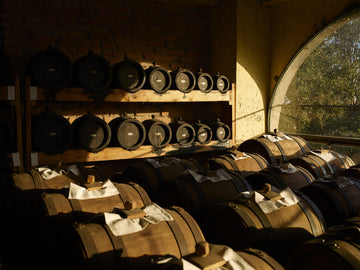
A unique and protected method
How the DOP balsamic vinegar is born
The Consortium of Traditional Balsamic Vinegar of Reggio Emilia was founded in the mid-80s to unite under a single project all the lovers and producers of Traditional Balsamic Vinegar of Reggio Emilia.
Since 2010 it has been awarded the "Protection", a prerogative that belongs to those producer associations that represent at least 2/3 of the supply chain and which thus have the possibility of promoting, maintaining relationships with institutions and having a supervisory agent.


